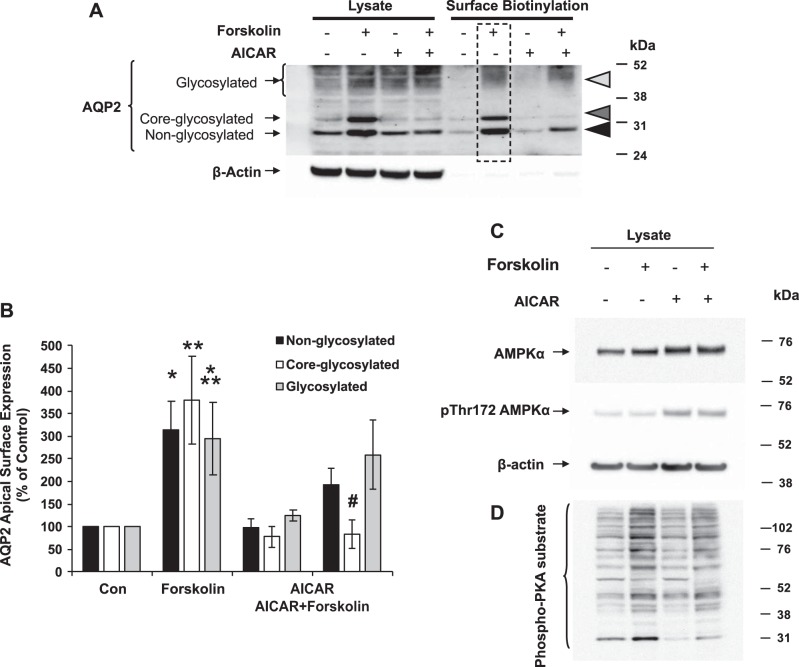Fig. 2.
AMPK activator AICAR prevents apical membrane accumulation of AQP2. Polarized mpkCCDc14 cells were treated with vehicle (DMSO) or the AMPK activator AICAR (1 mM) for 4 h and then 10 μM forskolin (vs. vehicle) for the last 2 h before cell harvesting. 5% of the cell lysates were used for immunoblotting using antibodies against AQP2 or actin as a loading control. The rest of the lysates were affinity purified using streptavidin followed by immunoblotting. A: representative immunoblots of 3 separate surface biotinylation experiments are shown. B: summary densitometric data comparing the mean (±SE) amounts of apical AQP2 as a percentage of that in the control condition for nonglycosylated (solid bars), core glycosylated (open bars), and fully glycosylated (shaded bars) forms of AQP2 are shown. Nonglycosylated: *P < 0.05, control vs. forskolin; core-glycosylated: **P < 0.05, control vs. forskolin, #P < 0.05, forskolin vs. AICAR + forskolin; fully glycosylated: ***P < 0.05, control vs. forskolin (one-tailed unpaired t-tests). Representative immunoblots were performed using antibodies against total AMPK-α, pThr-172 AMPK-α, and β-actin (C) and phospho-PKA substrate (D) under the above treatment conditions.

